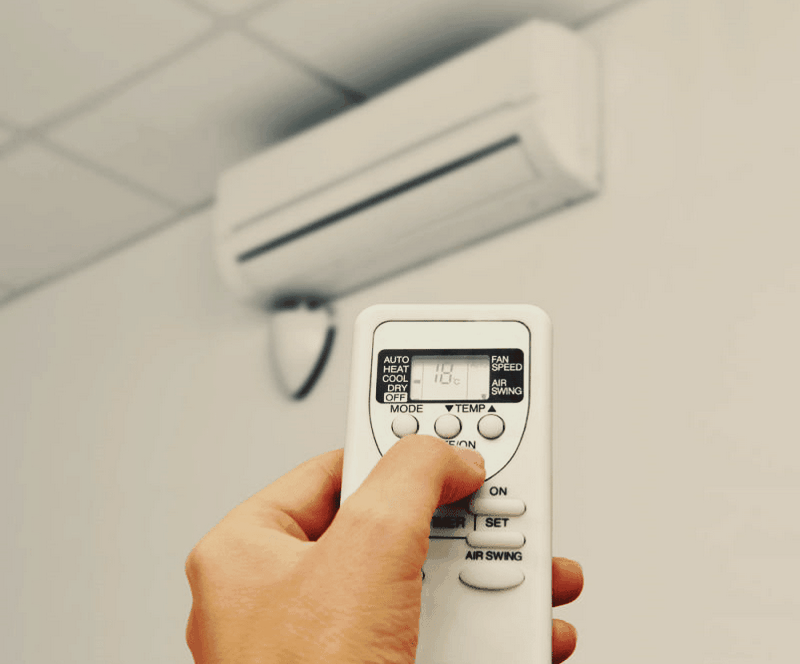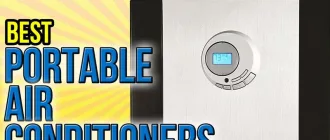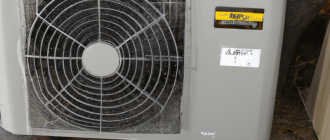
What to check if AC is not cooling?
When it comes to staying cool, a functioning air conditioner is essential. But what do you do if your AC is not cooling? There could be several reasons why your AC is not cooling properly, and it’s important to troubleshoot the issue before calling a professional.
If your AC is not cooling, the first thing to check is the thermostat. Make sure it is set to the correct temperature and that it is functioning properly. Sometimes, the issue can be as simple as a dead battery in the thermostat, so be sure to check and replace if necessary.
Another common cause of an AC not cooling is a dirty air filter. A clogged air filter restricts airflow, making it difficult for your AC to cool the air effectively. Check your air filter and clean or replace it if needed. This simple step can often resolve the issue and get your AC back to cooling properly.
If your AC is still not cooling after checking the thermostat and air filter, there may be a problem with the condenser unit. The condenser is located outside and is responsible for releasing heat from the air. If it is dirty or blocked, it can’t effectively cool the air. Clean the condenser coils and remove any debris to ensure proper airflow.
If none of these troubleshooting tips solve the issue, it may be time to call a professional HVAC technician. They will be able to diagnose and fix any underlying problems with your AC system, ensuring that you stay cool and comfortable all summer long.
Insufficient Refrigerant Levels
If your AC is not cooling as it should, one possible issue could be insufficient refrigerant levels. Refrigerant is a crucial component in the cooling process. It absorbs heat from the air inside your home and releases it outside, helping to cool down the indoor air.
So, what should you do if you suspect your AC is low on refrigerant? The first step is to check the refrigerant levels. This is typically a job best left to a professional HVAC technician, as it requires specialized tools and knowledge. They will be able to accurately measure the refrigerant levels and determine if it needs to be topped off.
Low refrigerant levels can be caused by leaks in the AC system. Over time, the refrigerant can slowly escape through tiny holes or cracks, leading to a decrease in cooling efficiency. If a leak is detected, it’s important to fix it as soon as possible to prevent further loss of refrigerant.
It’s worth noting that adding refrigerant alone is not a permanent solution, as it will continue to leak if the underlying issue is not addressed. A professional technician can help identify and repair any leaks in the system, ensuring that your AC is running efficiently and effectively.
If you notice that your AC is not cooling effectively, it’s important to have it checked by a professional as soon as possible. They will be able to diagnose the problem and provide the necessary repairs to restore proper cooling performance.
Dirty Air Filters
One common issue that can prevent an AC from cooling properly is dirty air filters. Air filters in an AC system are responsible for trapping dust, debris, and other pollutants from entering the unit. Over time, these filters can become clogged with dirt and restrict the airflow, reducing the cooling capacity of the AC.
To check if dirty air filters are causing the AC not to cool effectively, follow these steps:
- Locate the air filters in your AC unit. These are typically found behind a removable panel on the front of the unit or in a separate, easily accessible compartment.
- Remove the filters from the unit.
- Inspect the filters for dirt, dust, and debris. If they appear dirty or clogged, it is a clear sign that they need to be cleaned or replaced.
- If the filters are washable, rinse them under running water to remove the dirt. Allow them to dry completely before putting them back in the unit.
- If the filters are disposable, replace them with new ones. Make sure to choose the correct size and type of filters recommended by the AC manufacturer.
Cleaning or replacing dirty air filters is a simple and effective way to improve the cooling performance of your AC system. It is recommended to check and clean the filters regularly, preferably every 1-2 months, to ensure optimal airflow and cooling efficiency.
Faulty Compressor
If your AC is not cooling, one possible issue could be a faulty compressor. The compressor is responsible for compressing the refrigerant and moving it through the system, and if it is not working properly, your AC may not be able to cool effectively.
To check if the compressor is the problem, you can start by listening for any unusual noises coming from the AC unit. A faulty compressor may make a loud humming or buzzing sound. Additionally, you can check if the compressor is running by inspecting the outdoor unit. You should be able to hear and feel the compressor working, and the fan should also be running. If the unit is not running or if the fan is not spinning, it could indicate a problem with the compressor.
If you suspect that the compressor is faulty, it is recommended to contact a professional HVAC technician to diagnose and repair the issue. The compressor is a complex component and requires specialized knowledge and tools to repair or replace. Attempting to fix it yourself could potentially cause further damage to the AC unit. A trained technician will be able to accurately diagnose the problem and provide a reliable solution to get your AC cooling again.
Low Airflow
If your AC is on but there is low airflow coming out of the vents, there are a few things you can check to troubleshoot the issue:
- Check the air filters: Dirty or clogged air filters can restrict the airflow. Remove the filters and clean or replace them if necessary.
- Check the ductwork: Inspect the ductwork for any blockages or leaks. Use a flashlight to look for any obstructions or damaged sections that may be affecting the airflow.
- Check the blower fan: Ensure that the blower fan is working properly. If it is not functioning or if it is running at a slower speed, it may be causing low airflow. Contact a professional to repair or replace the blower fan if needed.
- Check the vents: Ensure that the vents are open and not blocked by furniture or other objects. Make sure that the vent covers are clean and free from dust or debris that may be obstructing the airflow.
- Check the air conditioner’s settings: Verify that the AC is set to the correct mode (cooling mode) and that the temperature is set to a level that should result in cooling. Adjust the settings if necessary.
If you have checked all of the above and the airflow is still low, it may be best to consult a professional HVAC technician to diagnose and resolve the issue.
| Low Airflow | Dirty or clogged air filters, obstructed ductwork, malfunctioning blower fan, blocked vents, incorrect AC settings | Check and clean/replace air filters, inspect and clear ductwork, repair/replace blower fan if necessary, remove obstructions from vents, adjust AC settings |
Thermostat Issues
If your AC is not cooling properly, one common issue could be with the thermostat. The thermostat is responsible for detecting the temperature in your home and signaling the AC to turn on or off. Here are a few things to check if you suspect thermostat problems:
- Make sure the thermostat is set to the AC mode and not the heat mode.
- Check the temperature setting to ensure it is lower than the current room temperature.
- Make sure the thermostat is receiving power. Check the battery if it is a battery-operated thermostat, or check the power supply if it is hardwired.
- Restart the thermostat by turning it off, waiting for a few seconds, and then turning it back on.
- Inspect the thermostat for any physical damage or loose wiring. If you find any issues, consider calling a professional to repair or replace the thermostat.
By checking these thermostat-related issues, you can address any problems that may be causing your AC to not cool properly.
Leaks in the Air Ducts
If your AC is not cooling as it should, one possible issue to check for is leaks in the air ducts. The air ducts are responsible for distributing cool air throughout your home, so any leaks can significantly impact the cooling efficiency.
What to Check:
- Inspect the air ducts visually for any visible signs of leaks, such as disconnected joints, loose fittings, or holes in the ductwork.
- Run your hand along the ducts to feel for any air escaping from the ducts.
- Use a flashlight to check for any signs of moisture or condensation around the ducts, which may indicate a leak.
If you find any leaks in the air ducts, it is important to repair them as soon as possible. Leaks can lead to decreased cooling efficiency, increased energy consumption, and potentially even damage to your AC system.
To fix leaks in the air ducts, you can take the following steps:
- Clean the ducts to remove any dust, debris, or mold that may be present.
- Use foil tape or duct mastic to seal any visible or accessible leaks in the ductwork.
- If the leaks are larger or more extensive, consider hiring a professional HVAC technician to inspect and repair the ducts.
Regular maintenance and inspection of the air ducts can help prevent leaks and ensure proper cooling efficiency in your AC system.
Clogged Condenser Coils
If your AC is not cooling as it should, one possible issue to check for is clogged condenser coils. The condenser coils are responsible for releasing heat from inside your home to the outside. Over time, these coils can become clogged with dirt, dust, and debris, which can hinder the cooling process.
To check if your condenser coils are clogged, you can visually inspect them for any visible debris. Use a flashlight to carefully examine the coils, both inside and outside the unit. If you notice a significant buildup of dirt or other particles, then cleaning the coils may help improve the cooling performance of your AC.
To clean the condenser coils, you can use a soft brush or a vacuum cleaner with a brush attachment to gently remove the dirt and debris. Be sure to turn off the AC and disconnect the power before attempting to clean the coils. Additionally, it’s important to be gentle and avoid bending or damaging the coils during the cleaning process.
If the condenser coils are severely clogged or if cleaning them does not resolve the issue, it’s recommended to seek professional help. A licensed HVAC technician can thoroughly clean the coils and inspect the AC system for any other underlying problems that may be causing the cooling issue.
| Improved cooling performance | May require professional assistance |
| Inexpensive solution | Time-consuming process |
| Prevents further damage to the AC system |
Blocked or Closed Vents
If your AC is not cooling properly, one of the first things to check is whether any vents in your house are blocked or closed. Blocked or closed vents can restrict the airflow and prevent cool air from reaching certain areas of your home. This can make it seem like your AC is not cooling effectively.
To check for blocked or closed vents, inspect each vent in your house and ensure they are all open and unobstructed. Move any furniture or objects that may be blocking the vents. Additionally, make sure the vents are not covered by curtains or other window treatments.
If you find any vents that are closed or obstructed, open them or remove the obstruction. This will allow a proper airflow and help your AC cool your home more effectively.
Improperly Sized AC Unit
If your AC is not cooling properly, one possible reason could be that your AC unit is not the right size for your space. It’s important to have an AC unit that is properly sized to cool the square footage of the area you are trying to cool.
What happens if your AC is not the right size? If the AC unit is too small for the space, it may struggle to cool the area efficiently, resulting in the AC running constantly, but still not achieving the desired cooling effect. On the other hand, if the AC unit is too big for the space, it may cool the area too quickly and then shut off, leading to short cycling and inconsistent cooling.
If you suspect that your AC unit is improperly sized, there are a few things you can check. First, check the square footage of the area you are trying to cool and compare it to the recommended BTU (British Thermal Units) for cooling that size of space. This information can usually be found in the AC unit’s specifications or user manual. If there is a significant mismatch between the recommended BTU and the size of your AC unit, it may be too small or too big for the space.
Another check you can perform is to consider other factors that may affect the cooling capacity, such as the insulation of your space, the number of windows, and the amount of direct sunlight it receives. Taking these factors into account can help determine if your AC unit is properly sized for the specific conditions of your space.
If you determine that your AC unit is improperly sized, it may be necessary to replace it with a unit that is better suited for your space. Consulting with a professional HVAC technician can help you determine the correct AC unit size and make sure it is installed properly to ensure optimal cooling performance.
Damaged Fan Motor
If your AC is not cooling, one potential issue to check is a damaged fan motor. The fan motor is responsible for circulating air through the vents and across the evaporator coils, which helps cool the air before it is distributed throughout your home. If the fan motor is damaged or malfunctioning, it may not be able to effectively move air, resulting in reduced cooling performance.
To determine if the fan motor is the cause of the cooling issue, start by turning off the power to the AC unit. Once the power is off, you can inspect the fan motor for any visible signs of damage, such as a bent or broken fan blade or a burnt-out motor. Additionally, you can try spinning the fan blade manually to see if it moves freely. If the fan blade is difficult to move or does not spin at all, the motor may be damaged and in need of repair or replacement.
If you suspect a damaged fan motor, it is best to contact a professional HVAC technician to assess the issue and perform any necessary repairs. They will have the expertise and tools to properly diagnose and address the problem, ensuring that your AC system is functioning efficiently and providing effective cooling for your home.
Electrical Problems
If your AC is not cooling properly, it could be due to electrical problems. Here’s what you can check:
- Make sure the thermostat is set to the correct temperature and mode. Sometimes, the AC may not cool if it’s set too high or if it’s in fan mode instead of cooling mode.
- Check the circuit breaker of your AC unit. If it’s tripped, reset it and monitor if the AC starts cooling again. If the breaker keeps tripping, it could indicate a more serious electrical issue.
- Inspect the wiring connections of your AC. Loose or damaged wiring can prevent the unit from functioning properly. If you notice any issues, it’s best to call a professional electrician to fix it.
- Ensure that the condensate pump is working correctly. If the pump is not functioning, it can cause water to accumulate in the AC unit, affecting its cooling performance.
If you’ve checked all of the above and your AC is still not cooling, it’s recommended to contact a qualified HVAC technician to diagnose and fix the electrical problem.
Frozen Evaporator Coil
If your AC is not cooling properly, one possible issue could be a frozen evaporator coil. The evaporator coil is responsible for removing heat from the air, but if it becomes too cold, it can freeze up and prevent proper airflow. Here’s what to check if you suspect a frozen evaporator coil:
- Check the air filter: A dirty or clogged air filter can restrict airflow and cause the evaporator coil to freeze. Make sure to clean or replace the air filter regularly.
- Check the thermostat settings: Ensure that the thermostat is set to the desired cooling temperature. If the temperature setting is too low, it can cause the evaporator coil to freeze.
- Check for restricted airflow: Inspect the vents and registers to ensure they are not blocked or closed. Restricted airflow can lead to freezing of the evaporator coil.
- Check the refrigerant levels: Low refrigerant levels can also cause the evaporator coil to freeze. If you suspect a refrigerant leak, it’s best to call a professional HVAC technician to handle the situation.
- Check the blower fan: A malfunctioning blower fan can cause inadequate airflow and result in a frozen evaporator coil. Make sure the fan is running properly.
If you have checked these common issues and the evaporator coil continues to freeze, it’s recommended to contact a licensed HVAC technician for further diagnosis and repair.
Inadequate Maintenance
If your AC is not cooling properly, one of the common issues could be inadequate maintenance. Regular maintenance is crucial to keep your AC functioning at its best. Here are a few things to check if your AC is not cooling:
1. Clean or replace the air filter: A dirty or clogged air filter can restrict airflow, making it difficult for your AC to cool the air. Check the filter and clean or replace it if needed.
2. Clear the condenser unit: The condenser unit, located outside, should be clear of debris, such as leaves, grass, or branches. Make sure to clean the unit and remove any obstructions that might hinder air circulation.
3. Check the evaporator coil: The evaporator coil, located inside the AC unit, should be clean and free of dirt or dust. If it’s dirty, it can impede the cooling process. Use a soft brush or vacuum cleaner to gently clean the coil.
4. Inspect the refrigerant levels: Low refrigerant levels can hinder the cooling process. If you suspect a refrigerant leak, it’s best to hire a professional to inspect and refill the levels if necessary.
5. Examine the thermostat settings: Ensure that the thermostat is set to the desired temperature and cooling mode. If it’s set incorrectly, your AC may not cool properly.
By regularly performing these maintenance checks, you can help prevent inadequate cooling and ensure that your AC operates efficiently.
Q&A:
Why is my AC not cooling the room?
There can be several reasons why your AC is not cooling the room. It could be due to a dirty air filter, low refrigerant levels, a faulty thermostat, or a malfunctioning compressor. It is recommended to check these components and clean or repair them if necessary.
What should I do if my AC has low refrigerant levels?
If your AC has low refrigerant levels, it is recommended to contact a professional technician to recharge the refrigerant. Adding refrigerant to the AC requires specialized equipment and knowledge, so it is best to leave it to the experts. A technician will be able to identify any leaks and ensure that the AC is properly filled with refrigerant.
Why is my AC compressor not working?
If your AC compressor is not working, it could be due to a faulty capacitor, a burnt motor, or an electrical issue. It is important to turn off the AC and call a professional technician to inspect and repair the compressor. Trying to fix the compressor yourself can be dangerous and may cause further damage to the AC.
Why is my AC not cooling the room?
There could be several reasons why your AC is not cooling the room. It could be due to a dirty air filter, which restricts airflow and reduces cooling capacity. Another possible reason is a refrigerant leak, which can cause a drop in cooling efficiency. It could also be a problem with the compressor or condenser unit. It’s best to call a professional technician to diagnose and fix the issue.
What should I do if my AC is blowing warm air instead of cold air?
If your AC is blowing warm air instead of cold air, there are a few troubleshooting tips you can try. First, check if the thermostat is set to the cooling mode and the temperature is set lower than the room temperature. Next, check if the air filter is clean and not clogged, as a dirty filter can restrict airflow and reduce cooling capacity. You should also check if the outdoor unit is running and if the refrigerant levels are sufficient. If these tips don’t work, it’s best to call a professional technician to diagnose and fix the problem.




